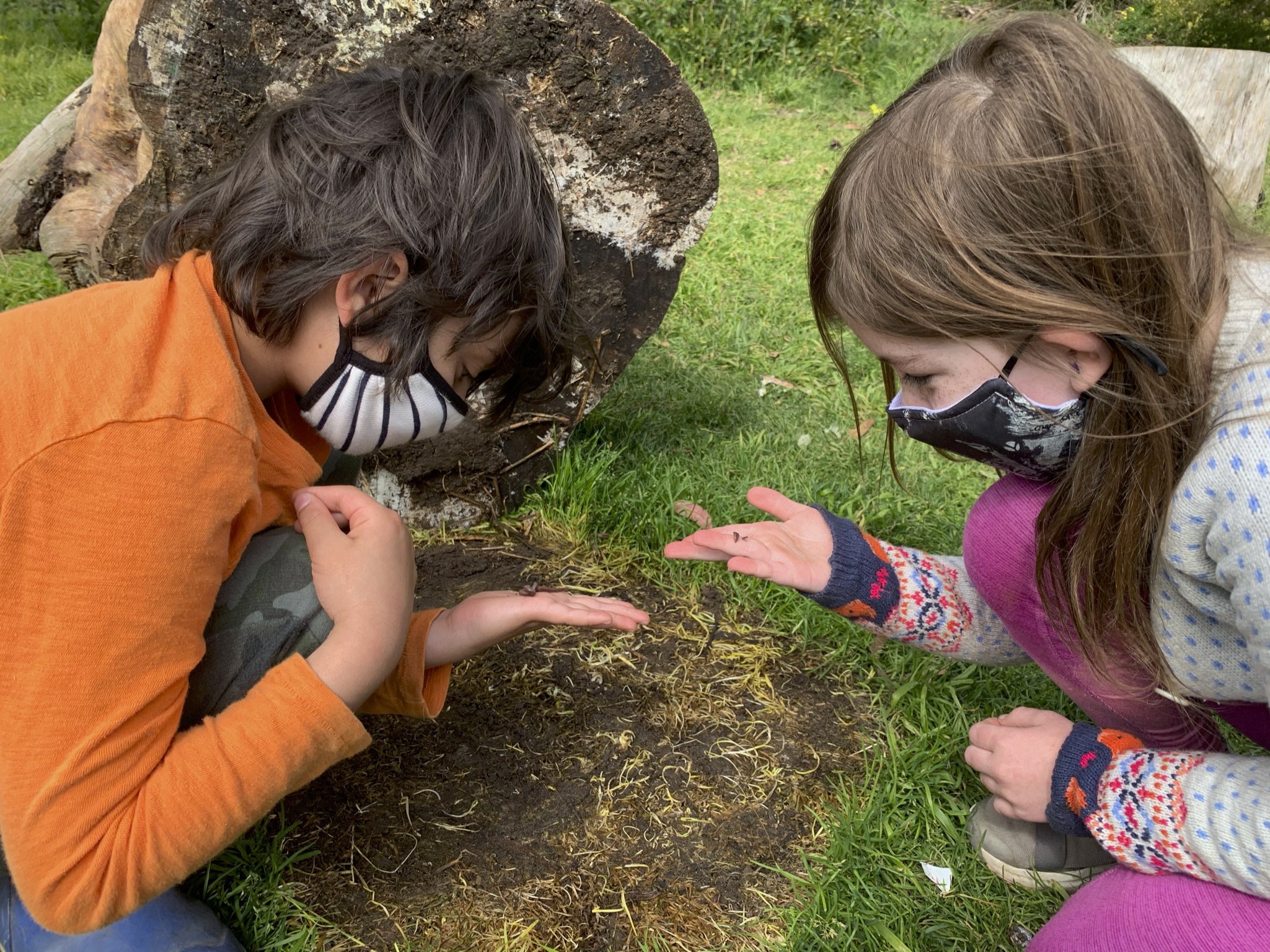Park Stories
The 2020/2021 school year was a study in flexibility and making it work. When the school got the news from the SFDPH that we could reopen school in person, we were thrilled. Everyone was excited to get off Zoom and back together again. But doing it safely, when the pandemic was in a much different stage-- masking rules, social distancing, continued closures, and nervousness around Covid-19-- was a bigger question. Being the seize-the-moment school that we are, we decided that we’d open our elementary school for in-person learning entirely in Golden Gate Park.
Starting in October 2020, elementary students were in the park adventuring and learning, rain or shine. By the spring, the kids had become extremely familiar with the ins and outs of the plants, animals, and people who live in or love the park. They learned different ways of seeing the nature around them: with all five senses, through the various games they played and adventures that they went on together, and the creatures and plants they encountered and watched change during fall, winter, and spring.
During the Bridge arc, the Lapis Lazuli band students (ages 7 and 8) built on foundations of routines, explorations, and community to create stable bridges that connect us to San Francisco’s past, to each other, and to the natural world. Like the Golden Gate Bridge, the band had so many different cords that strengthened their bridges -- values, like sharing and being inclusive; practices, like checking in and asking to play; and routines, like Morning Meeting and Afternoon Adventure. The sense of community and social-emotional learning was reinforced each day, whenever students shared discoveries with each other, decided that having fun was more important than always winning, or checked in on each other’s wants and needs.
Though skill building and practice was complicated by the great outdoors, the Lapis kids nevertheless worked on math, science, and writing. As writers, they practiced being close observers of both their internal and external worlds. They worked on telling small moment stories: times they felt big emotions and adding detail to really explain and emphasize what was happening and how they felt about it. They recorded our senses in the redwoods, how-to guides for some of their favorite activities, and the flora and fauna they studied during their adventures. They read nonfiction books to help they learn how to organize their ideas in a book and on the page.
They also practiced nature journaling, which helped them get into the finer details of what they observed and how plants and animals adapt and change to their environment. Their nature journaling practice helped them zoom in on one particular place or organism and see all of its adaptations. They also read and consulted maps of many different scales, and even made their own to keep track of both real and imaginary worlds.
When they realized how much recording and storytelling they’d done on paper, they decided to compile their best work into a compendium to help them recognize and record how special their time in the park was. They edited and rewrote their stories and observation pieces to include in the Park Book, taking all opportunities to find a helpful log to prop their papers against and get to scribbling and illustrating.
By the time their collaborator had compiled the book, it was 82 pages long, filled with observations, poems, illustrations, stories, and emotions. At the end of the school year, the Lapis students invited their families to their favorite spot in Hellman Hollow to talk about their experiences of park school and of collecting memories about the very unusual but wildly special time that they had learning out of the park at an otherwise very uncertain time.
















